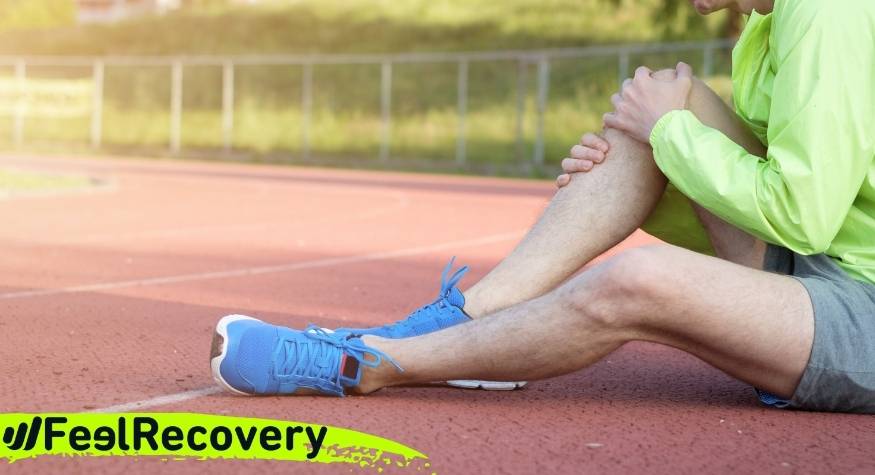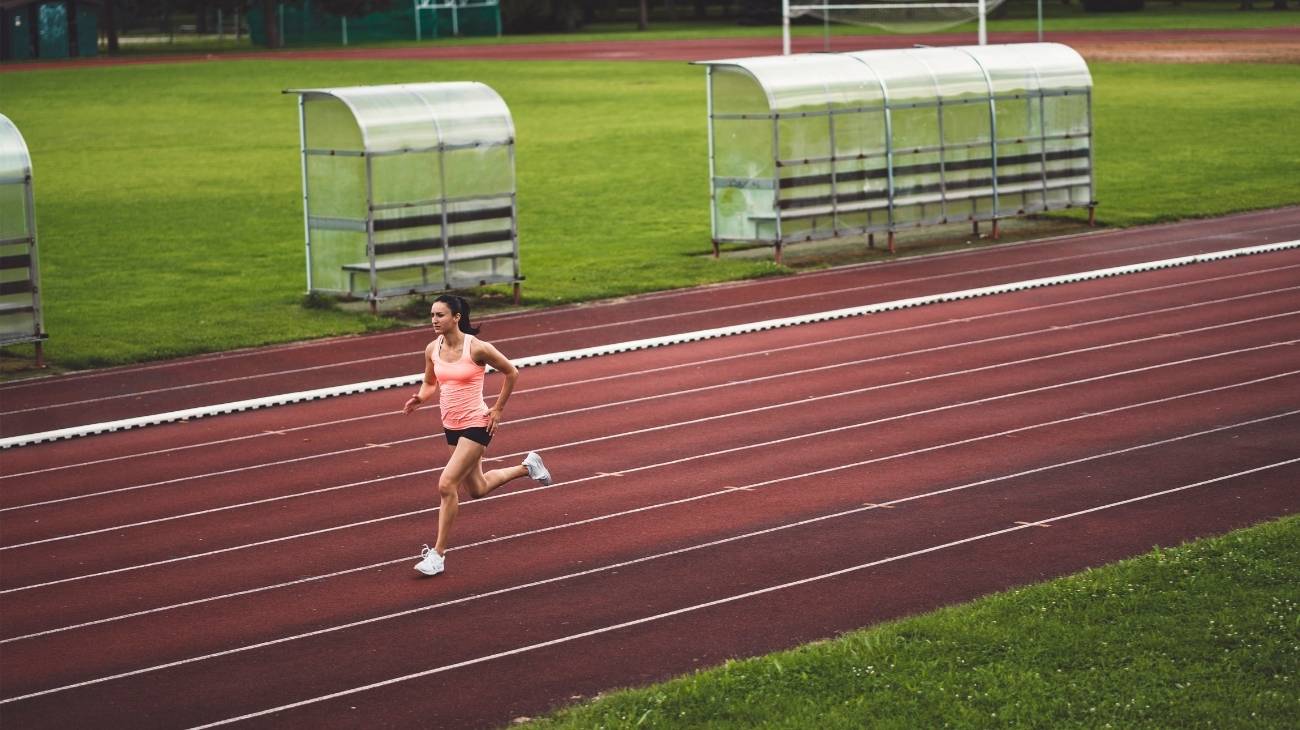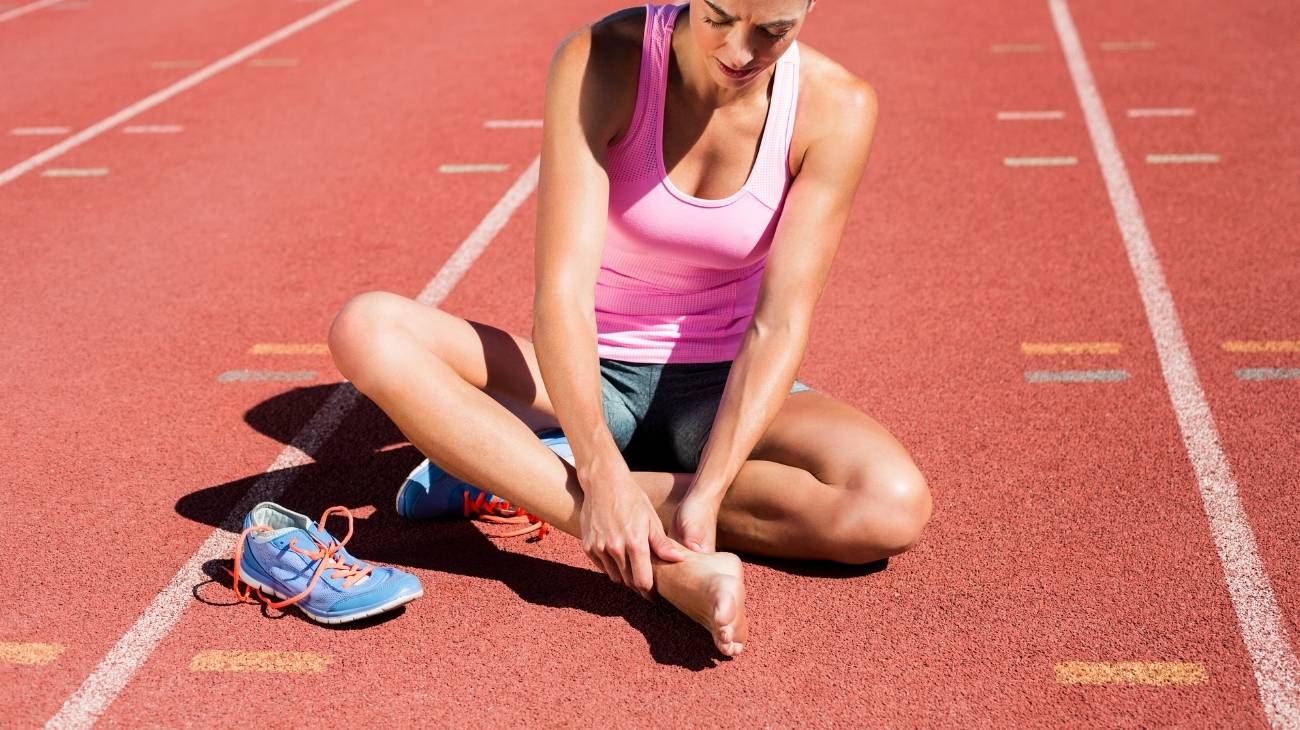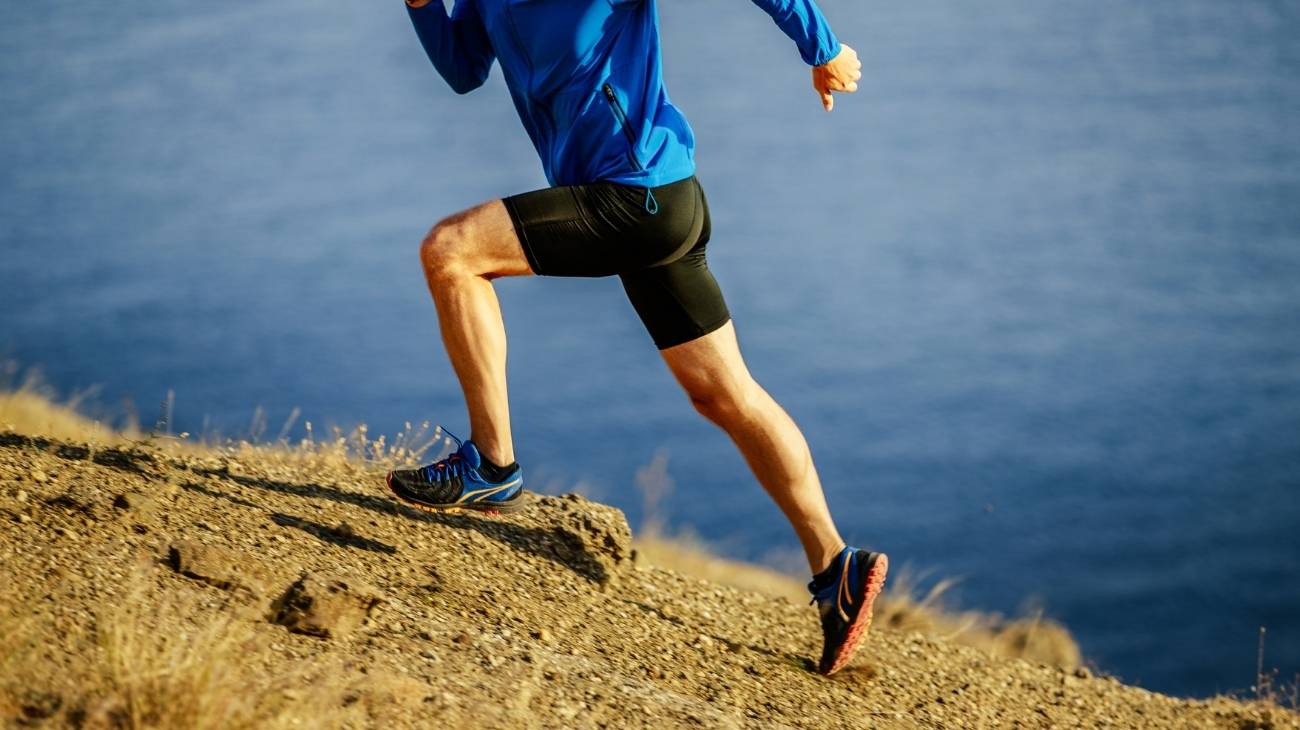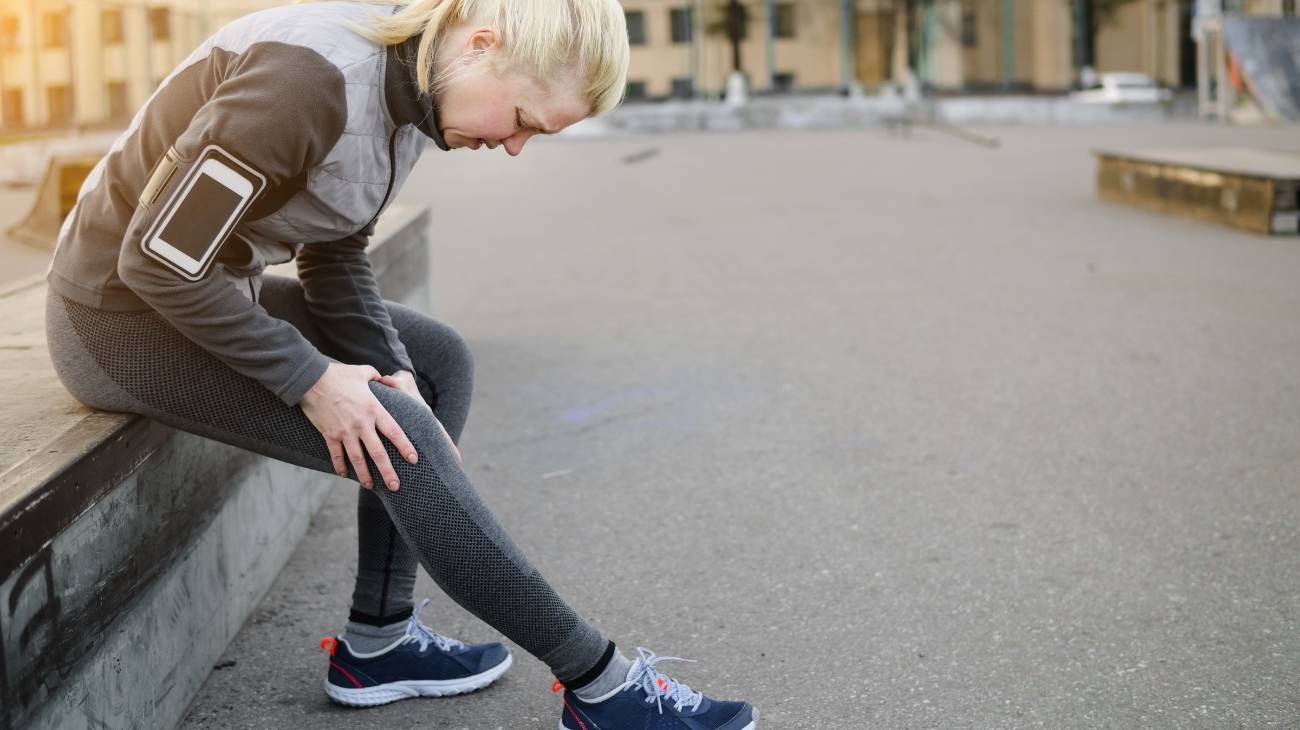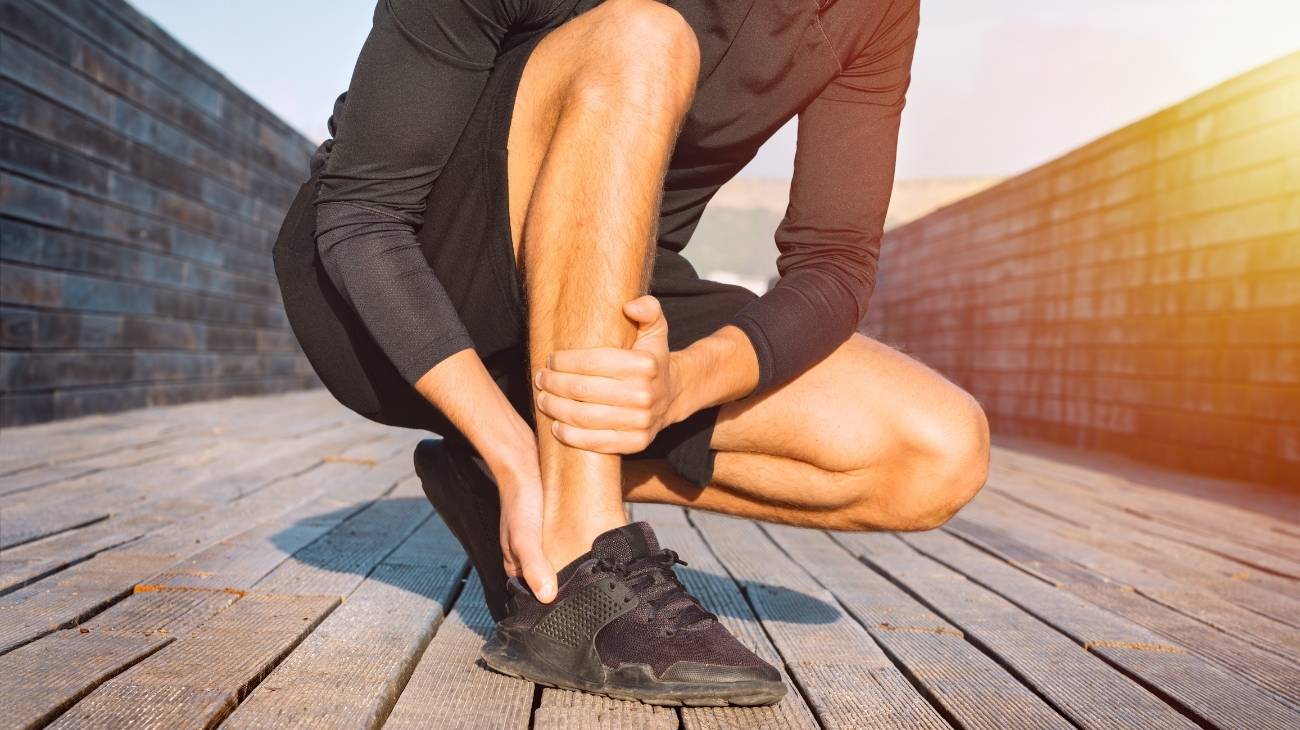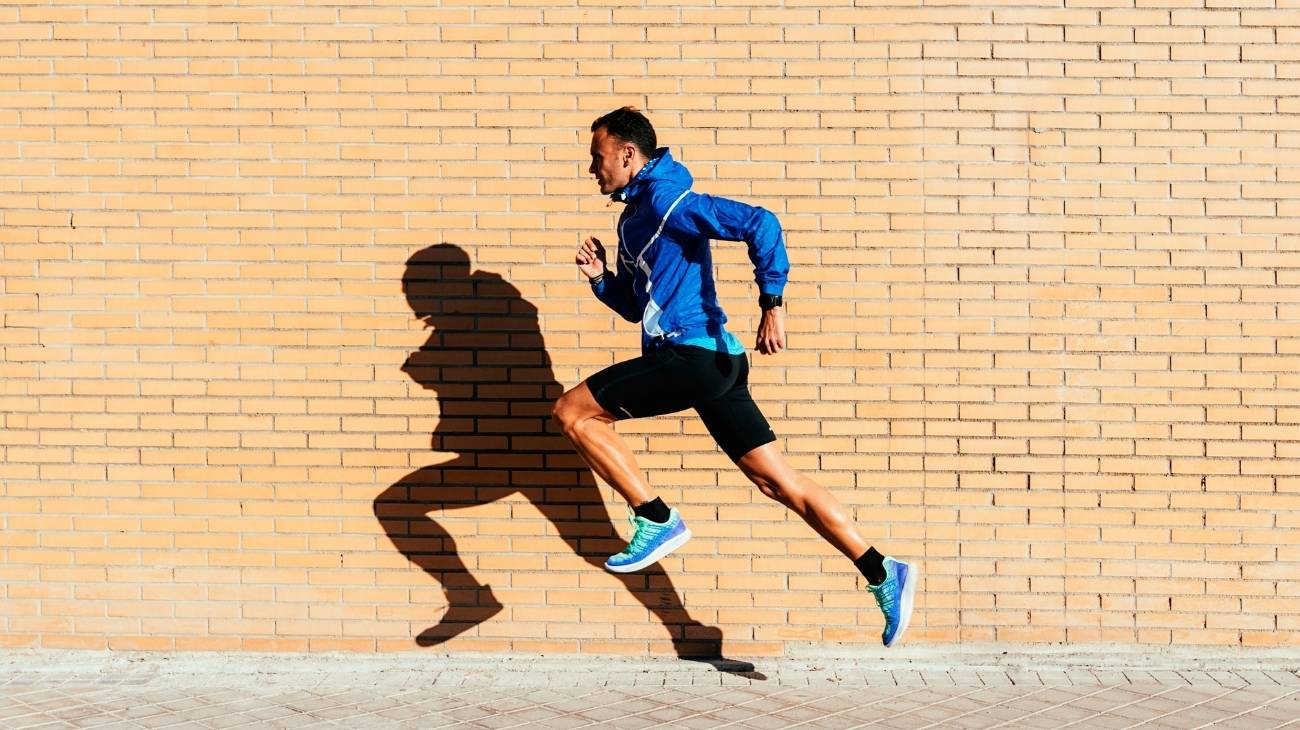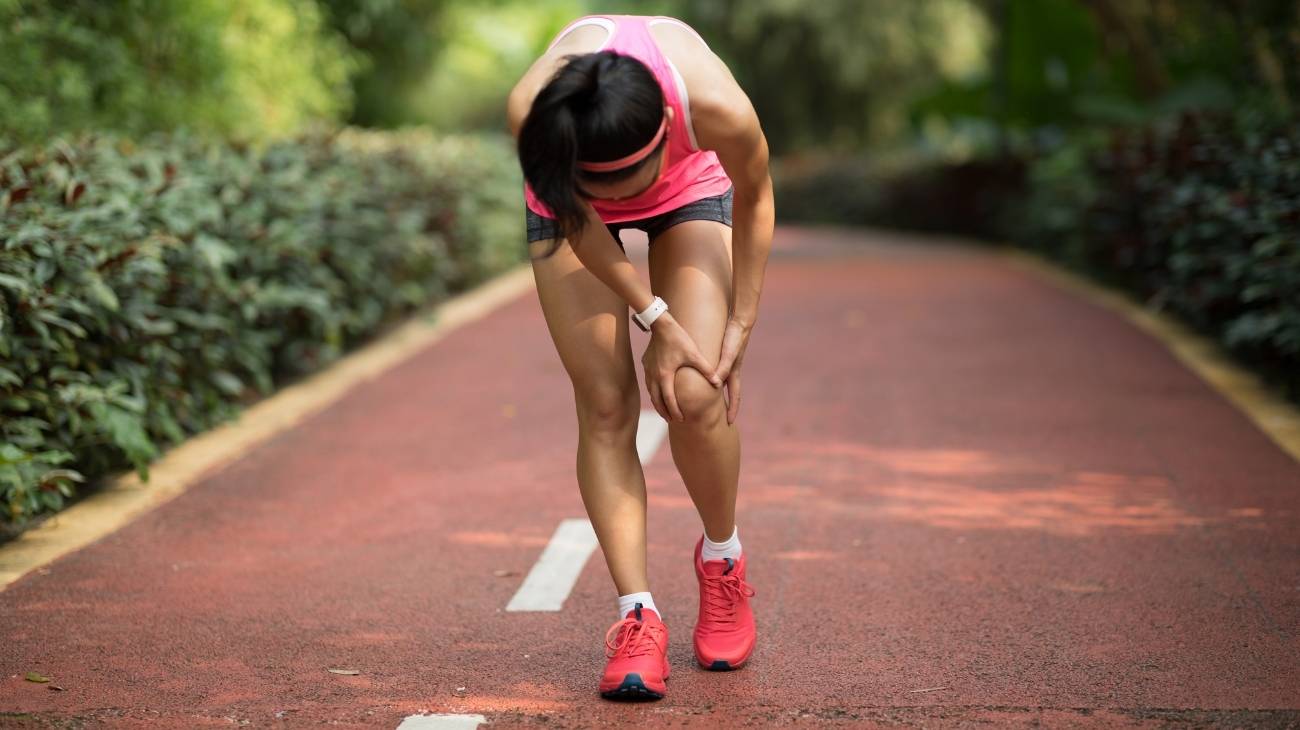The legs are the most important part of every runner, they are the secret to the power and endurance of your run, and they are by far the ones that benefit the most from running as they become stronger and healthier. However, this also makes them the most susceptible to injury.
Here we will introduce you to the most common leg injuries in this sport that has millions of fans around the world, as well as show you how to treat them with the RICE therapy.
What are the most common types of running leg injuries?
Legs are the largest limbs in the body and the strongest and most powerful in the entire human anatomy. The reality is that their muscles, bones and soft tissues are very strong, but running can take this strength to the extreme and cause them to suffer some of the injuries explained below.
Hamstring tears
The hamstrings are a group of muscles that run down from the base of the buttock to the knee at the back of the leg. They are made up of three muscles which are the biceps femoris, semitendinosus and semimembranosus. These are the most used in running, so they also have the most wear and tear.
When we push the hamstrings to the extreme, the muscle fibres of these muscles can fail and break, thus generating a muscle tear in any of the three mentioned above. The tear can be partial or complete and in both cases a sharp pain is felt in the back of the leg followed by swelling.
Quadriceps tear
The quadriceps is made up of four muscles that cover and protect the front of the femur, these are the medial, medial, lateral and rectus femoris, being one of the largest of the entire skeletal muscle system.
The tear in them is usually caused by pushing them to the limit during a race after a bad warm-up, or also by receiving a strong blow while the muscle is tense. In either case a bruise is generated followed by severe pain that will force the runner to stop completely.
Femur fracture
The femur is the largest and strongest bone in the entire body, but it is not indestructible, and can be fractured by a runner's sudden fall, or even by stress when the soft tissues that protect it fail and leave it vulnerable.
The fracture of this bone can occur somewhere in the femur, either in the upper head that connects it to the hip, or in the lower head that connects it to the knee. The latter two fractures are the most unusual but also the most serious because they often involve the ligaments of both joints.
Muscle contracture
A contracture is the involuntary contraction of a muscle, in this case the quadriceps or hamstrings. The most common cause is starting an intense race (sprint) after an inadequate warm-up that does not prepare the muscle for the stress it will be subjected to, as well as heavy exertion with few days of rest in between or insufficient training.
A contracture is a clear warning to the runner that the muscle is reaching its limit, and is the first serious sign that it may be on the verge of tearing. It generates a sharp pain, but unlike a tear, it disappears by simply stretching the muscle to bring it out of its strained state.
Tensor fascia lata tendonitis
Also known as "windshield wiper effect", this occurs when the iliotibial band becomes inflamed, this area connects at one end to the outside of the hip and the other end to the outside of the knee and runs down the entire leg. This is caused by running with inadequate footwear that does not absorb the impact well, or even by not warming up properly.
This tendinitis usually causes pain at the base of the outer side of the knee, but because it is so great it is also felt on the lateral part of the leg, forcing the runner to stop running if they do not want to run the risk of causing a much more serious injury.
Best products for recovery from running leg injuries
Bestseller
-
2 Knee Compression Sleeve (Black/Gray)
£20,95 -
2 Knee Compression Sleeve (Green/Navy)
£20,95 -
2 Knee Compression Sleeve (Pink/Bordeaux)
£20,95 -
2 Thigh Compression Sleeve (Green/Navy)
£20,95 -
2 Thigh Compression Sleeve (Pink/Bordeaux)
£20,95 -
Microwave Wheat Bag for Back Pain Relief (Extra Large) (Hearts)
£24,95 -
Microwave Wheat Bag for Back Pain Relief (Extra Large) (Oxford)
£24,95 -
Microwave Wheat Bag for Back Pain Relief (Extra Large) (Sport)
£24,95 -
Microwaveable Wheat Bag for Pain Relief (Hearts)
£20,95 -
Microwaveable Wheat Bag for Pain Relief (Oxford)
£20,95 -
Microwaveable Wheat Bag for Pain Relief (Sport)
£20,95 -
Wheat Bag for Microwave Classic Bottle Shaped (Hearts)
£20,95 -
Wheat Bag for Microwave Classic Bottle Shaped (Oxford)
£20,95 -
Wheat Bag for Microwave Classic Bottle Shaped (Sport)
£20,95
-
2 Calf Compression Sleeve (Black/Gray)
£20,95 -
2 Calf Compression Sleeve (Green/Navy)
£20,95 -
2 Calf Compression Sleeve (Pink/Bordeaux)
£20,95 -
2 Patella Knee Strap (Black/Gray)
£12,95 -
2 Patella Knee Strap (Green/Navy)
£12,95 -
2 Patella Knee Strap (Pink/Bordeaux)
£12,95 -
2 Thigh Compression Sleeve (Black/Gray)
£20,95 -
Ice Massage Roller Ball (Black)
£34,95 -
Ice Massage Roller Ball (Green)
£34,95 -
Ice Massage Roller Ball (Pink)
£34,95 -
Soft Density Foam Roller for Recovery (Black)
£34,95 -
Soft Density Foam Roller for Recovery (Green)
£34,95 -
Soft Density Foam Roller for Recovery (Pink)
£34,95 -
Sport Compression Socks (1 Pair) (Black/Gray)
£20,95 -
Sport Compression Socks (1 Pair) (Green/Navy)
£20,95 -
Sport Compression Socks (1 Pair) (Pink/Bordeaux)
£20,95
How to apply the RICE therapy to treat leg injuries in runners and athletes?
With the exception of a femur fracture, which is a very serious injury, all of the above-mentioned injuries can be treated with the PRICE therapy, a series of steps indicating the first aid to be administered to an injured limb. This means: protection, rest, ice, compression and elevation.
- Protection: this step consists of protecting the injured leg with a bandage or splint to prevent it from being re-injured and making the injury worse.
- Rest: the next step is to sit down and stop using the leg so that any movement of the leg does not worsen the clinical picture of the injury.
- Ice: a cold compress with ice is placed in contact with the area of the leg where the swelling is noticeable, so that both the swelling and the pain are reduced.
- Compression: to prevent re-inflammation of the leg, a compression bandage is applied with elastic bandages or the use of compression thigh braces is also suitable.
- Elevation: Finally, you should lie on your back and elevate your leg above the level of your heart so that gravity reduces the blood supply to your leg and improves recovery.
References
- Johnston, C. A. M., Taunton, J. E., Lloyd-Smith, D. R., & McKenzie, D. C. (2003). Preventing running injuries. Practical approach for family doctors. Canadian family physician, 49(9), 1101-1109. https://www.cfp.ca/content/49/9/1101.short
- Gallo, R. A., Plakke, M., & Silvis, M. L. (2012). Common leg injuries of long-distance runners: anatomical and biomechanical approach. Sports health, 4(6), 485-495. https://journals.sagepub.com/doi/abs/10.1177/1941738112445871
- McCaw, S. T. (1992). Leg length inequality: implications for running injury prevention. Sports Medicine, 14, 422-429. https://link.springer.com/article/10.2165/00007256-199214060-00008
- Wang, S. S., Whitney, S. L., Burdett, R. G., & Janosky, J. E. (1993). Lower extremity muscular flexibility in long distance runners. Journal of Orthopaedic & Sports Physical Therapy, 17(2), 102-107. https://www.jospt.org/doi/abs/10.2519/jospt.1993.17.2.102
- Malliaropoulos, N., Papacostas, E., Kiritsi, O., Rad, P. M., Papalada, A., Gougoulias, N., & Maffulli, N. (2010). Posterior thigh muscle injuries in elite track and field athletes. The American journal of sports medicine, 38(9), 1813-1819. https://journals.sagepub.com/doi/abs/10.1177/0363546510366423
- Arnold, M. J., & Moody, A. L. (2018). Common running injuries: evaluation and management. American family physician, 97(8), 510-516. https://www.aafp.org/pubs/afp/issues/2018/0415/p510.html
- van Mechelen, W., Hlobil, H., Kemper, H. C., Voorn, W. J., & de Jongh, H. R. (1993). Prevention of running injuries by warm-up, cool-down, and stretching exercises. The American journal of sports medicine, 21(5), 711-719. https://journals.sagepub.com/doi/abs/10.1177/036354659302100513
- Junior, L. C. H., Costa, L. O. P., & Lopes, A. D. (2013). Previous injuries and some training characteristics predict running-related injuries in recreational runners: a prospective cohort study. Journal of Physiotherapy, 59(4), 263-269. https://www.sciencedirect.com/science/article/pii/S1836955313702030
- Saragiotto, B. T., Yamato, T. P., Hespanhol Junior, L. C., Rainbow, M. J., Davis, I. S., & Lopes, A. D. (2014). What are the main risk factors for running-related injuries?. Sports medicine, 44, 1153-1163. https://link.springer.com/article/10.1007/s40279-014-0194-6
- Brody, D. M. (1982). Techniques in the evaluation and treatment of the injured runner. The orthopedic clinics of North America, 13(3), 541-558. https://europepmc.org/article/med/6124922

